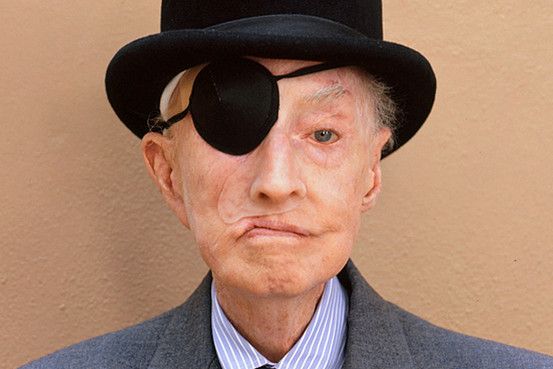Insurance Stories: Insuring Art

Harold Smith
Harold Smith was an investigator who represented Lloyd’s of London and other insurance companies for over fifty years.
He was born in the South Bronx in 1926 and attended local Catholic schools before joining the Merchant Marine Academy in New York. It was around this time that he contracted a dry-skin condition for which he allowed himself to be subjected to experimental treatments. These included being covered with oil before being exposed to full-body ultraviolet light. This led to him developing skin cancer throughout his body and losing his right eye, a lung and his nose.
Mr. Smith’s career in insurance began as an adjuster for Lloyd’s just after the Second World War but he soon realised his talents were suited to investigation. He began specialising in fine art and jewellery theft and became so well-known for solving crimes that he was also hired as a security consultant for museums, auction houses and art galleries such as Sotheby’s, Christie’s and the Getty Museum.
Insurance cases that he worked on included a notorious theft from the Isabella Stewart Gardner Museum in 1990. In the early morning, thieves disguised as policemen gained access into the Boston museum and successfully carried out the largest art heist in modern history. Among the thirteen priceless works stolen was Vermeer’s “The Concert” one of only 35 of his surviving works. To date, not a single work has been recovered. Smith featured in the 2005 film “Stolen” which tells the story of the theft and his personal obsession with the heist.
He sadly died in 2005, leaving behind eight children.
Leonardo Da Vinci
Below is the Leonardo da Vinci arriving at Gravesend in 1929. It was carrying an art collection insured at Lloyd’s for £14 million. That would be around £900 million today.
The works were being taken to Burlington House for the Italian Art Exhibition, organised by Major Longdon. When he was asked about the possibility of a claim, he said he wasn’t concerned about theft as ‘Nobody would dare buy any of it’. As part of the policy, detectives had to be present at the gallery and specially designed cases were used for the journey.
Lloyd’s also insured a da Vinci notebook for an undisclosed amount in 2007. The scientific notes were written in his distinctive mirror script around the year, 1508. The book travels to no more than one country each year.
When it was displayed in Dublin that year, security was described as ‘like something from Mission Impossible’. The insurer insisted on ‘CCTV, beams, sensors, guards, bullet-proof glass to display it in and a system linked directly to the Gardaí’.
The highest insurance value placed on a painting is unsurprisingly, the Mona Lisa. On permanent display at the Louvre, it was assessed at $100 million in December 1962. That would be around $2.1 billion in today’s money.

Art Treasures
Art treasures worth more than $1 million were recovered in 1981 when they were thrown from a moving car into the arms of an investigator from Lloyd’s of London.
The nine paintings and a sculpture were stolen from the Miami home of attorney, Daniel Neal Heller. The French Impressionist collection included paintings by Renoir, Boudin, Pissaro and Vuillard and was stolen from the living room of Mr. Heller’s home whilst he slept upstairs with his wife.
Lloyd’s offered the Hellers a $600,000 settlement for the paintings but they turned the offer down, saying they wanted the paintings back. At this point, Lloyd’s hired Dick Andrews, a specialist in the recovery of jewels and art objects, to find the art. He immediately posted a $100,000 reward for information leading to its return.
Days later, somebody tried to sell the pieces to New York art dealer Ira Spanierman. She was suspicious and asked the sellers to come back the next day but they didn’t return. Andrews then received a phone call from a man who identified himself only as “Joe” who claimed to have purchased two of the paintings in Central America six weeks earlier. He offered to have an “associate” return to Central America to buy back the other eight paintings in exchange for the reward money.
A meeting point was arranged in a wooded area of Dade County, Miami and it was there that the art (that had been stuffed into a suitcase) was thrown to Mr. Andrews from a speeding car. Throughout the episode he didn’t once meet the man who called himself Joe.
Another payment was avoided in 2009 when 10 silkscreen paintings by Andy Warhol were stolen from the home of Richard L. Weisman, a businessman and prominent collector.
Mr. Weisman put out a $1 million reward for information but waived the $25 million that he may have received under an insurance policy saying: “I don’t want to go through the hassle of an investigation.”
Another of Warhol’s works was stolen from her home of Liza Minelli in 1990. Again, Lloyd’s avoided paying out when it was recognised by an expert minutes before it was to be auctioned at Sotheby’s in New York.

Stories from Paul Miller.
Paul is HFG’s in-house historian and is a History Ambassador for the Insurance Museum.
Click here to find our previous Insurance Stories on our blog.





